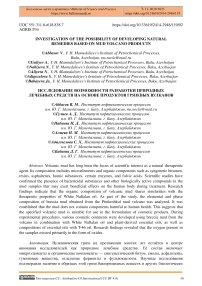Investigation of the Possibility of Developing Natural Remedies Based on Mud Volcano Products
Автор: Abbasov V., Guliyev A., Nabiyeva N., Aliyeva N., Adigozelova S., Babayeva Ja.
Журнал: Бюллетень науки и практики @bulletennauki
Рубрика: Естественные науки
Статья в выпуске: 10 т.11, 2025 года.
Бесплатный доступ
Volcanic mud has long been the focus of scientific interest as a natural therapeutic agent. Its composition includes microelements and organic components such as syngenetic bitumen, resins, asphaltenes, humic substances, certain enzymes, and fulvic acids. Scientific studies have confirmed the presence of bactericidal substances and other biologically active compounds in the mud samples that may exert beneficial effects on the human body during treatment. Research findings indicate that the organic composition of volcanic mud shares similarities with the therapeutic properties of White Naftalan oil. As part of the study, the elemental and phase composition of breccia mud obtained from the Pirekeshkul mud volcano was analyzed. It was established that the mud does not contain components harmful to human health. This suggests that the specified volcanic mud is suitable for use in the formulation of cosmetic products. During experimental procedures, various cosmetic ointments were developed using breccia mud from the volcano in combination with White Naftalan oil and plant-derived essential oils, as well as compositions of essential oils with T-46 oil. Research findings revealed that the oxygen present in the samples existed primarily in the form of oxides.
Mud volcano, breccia mud, White Naftalan oil, T-46 oil, essential oils, cosmetic ointments
Короткий адрес: https://sciup.org/14133919
IDR: 14133919 | УДК: 551.311.8+618.838.7 | DOI: 10.33619/2414-2948/119/02
Текст научной статьи Investigation of the Possibility of Developing Natural Remedies Based on Mud Volcano Products
Бюллетень науки и практики / Bulletin of Science and Practice
UDC 551.311.8+618.838.7
Mud volcanoes have long found extensive application in medicine as therapeutic agents. Their curative properties stem from a composition rich in organic substances, mineral salts, and microelements, all of which exert beneficial effects on the human body. Since ancient times, Egyptians were known to apply mud volcano products directly onto their bodies. The Roman writer and philosopher Gaius Plinius (Pliny the Elder) referred to this practice in his writings as the “Egyptian method.” In later centuries, therapeutic use of mud volcano products spread to Europe as well. For instance, in Italy, such applications date back to the 16th century, while in the Taman Peninsula they began in the 19th century [1-3].
In Azerbaijan, which possesses vast reserves of this valuable natural resource, conditions are favorable for its large-scale utilization — including the establishment of centralized mud therapy centers even along the Caspian coast, where major volcanoes are located. Results of experimental studies suggest that mud solutions derived from these volcanoes may serve as novel therapeutic agents — such as for use in electrophoresis—in the treatment of various diseases. Due to its high balneological properties, volcanic mud has been effectively employed in treating disorders of the musculoskeletal system, spine, joints, peripheral nervous system, skin, gastrointestinal tract, diabetes mellitus, atherosclerosis, and cervical osteochondrosis. It is also widely used in cosmetology [2].
Volcanic breccia (also known as Sopka breccia) consists of terrigenous–carbonate rock fragments of various geological ages, primarily composed of a clay-rich matrix. Its color varies depending on the constituent rocks, typically ranging from gray and brownish-gray to greenish-gray. Due to its high water-holding capacity, volcanic breccia exhibits thixotropic properties, becoming more fluid and capable of flowing when saturated with water [4].
In terms of organic content, these muds show certain similarities with sapropelic muds and medicinal Naftalan oil. Among the organic substances, metaboric acids—known for their notable biological activity and bactericidal effects — are of particular interest.
The Sopka mud solution is a translucent liquid with a yellowish tint, odorless, and salty in taste. Compared to sapropelic muds, the degree of mineralization in mud volcano solutions is relatively low, ranging from 10–40 g/L, whereas sapropelic muds typically reach 150–350 g/L [1, 4].
Research Object and Method
The primary objective of our research was to develop cosmetic ointments based on combinations of white Naftalan oil with mud volcano products, or with mixtures involving industrial oils derived from the Baku region — particularly using dearomatized T-46 oil distillate. These formulations are intended for use in cosmetology and in the treatment of specific dermatological conditions [5-12].
To this end, we examined two types of volcanic breccia mud samples collected from the Pirekeshkul mud volcano: (1) freshly ejected clay-rich mud and (2) solidified mud that had previously emerged and subsequently dried. The elemental composition of these breccia mud samples was analyzed.
For the atomic composition analysis, we employed a Hitachi S-3400N scanning electron microscope equipped with an OXFORD Instruments atomic analyzer. To obtain highly reliable data, the samples were examined in multiple regions, prepared in tablet form, and degassed to eliminate oxygen and other gases absorbed from the atmosphere.
Results and Discussions
Figure 1 presents the micrograph (a) and atomic spectrum (b) of the freshly ejected clay-rich mud sample from the mud volcano. Figure 2 shows the micrograph (a) and atomic spectrum (b) of the sample taken from solidified volcanic mud. It should be noted that the samples were ground prior to analysis.
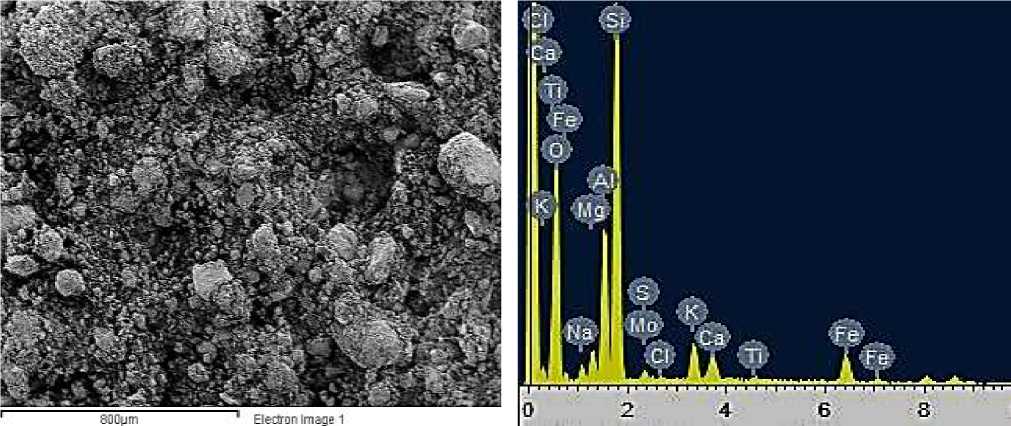
b
Figure 1. Micrograph (a) and atomic spectrum (b) of the mud volcano sample.
The micrographs indicate that the ground samples consist of particles ranging from 1.0 to 100 µm in size. As evident from the atomic spectra of the analyzed samples, they are composed of nearly identical elements. The quantitative composition of the various elements in these samples is also approximately the same. Experimental results demonstrate that the samples contain uniformly distributed atoms of O, Na, Mg, Al, Si, S, Cl, K, Ca, Ti, Fe, and Mo. The distribution of the identified atoms in the solid samples is clearly illustrated in Figure 3.
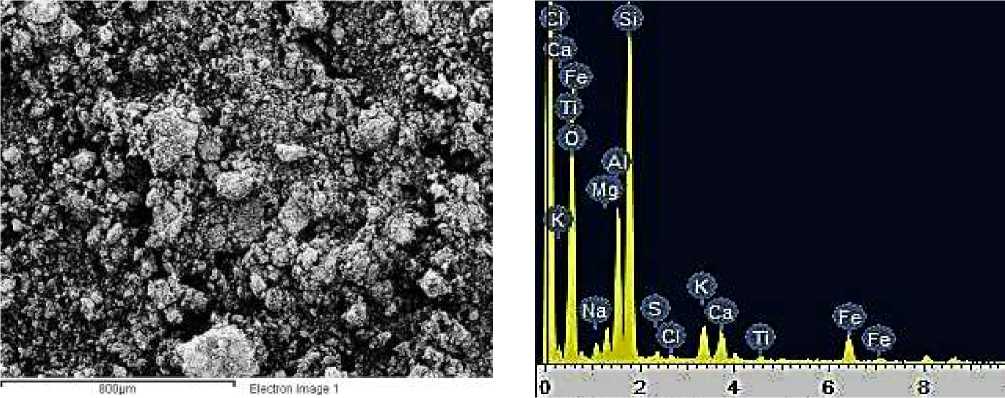
a b
Figure 2. Micrograph (a) and atomic spectrum (b) of the sample taken from solidified mud volcano material
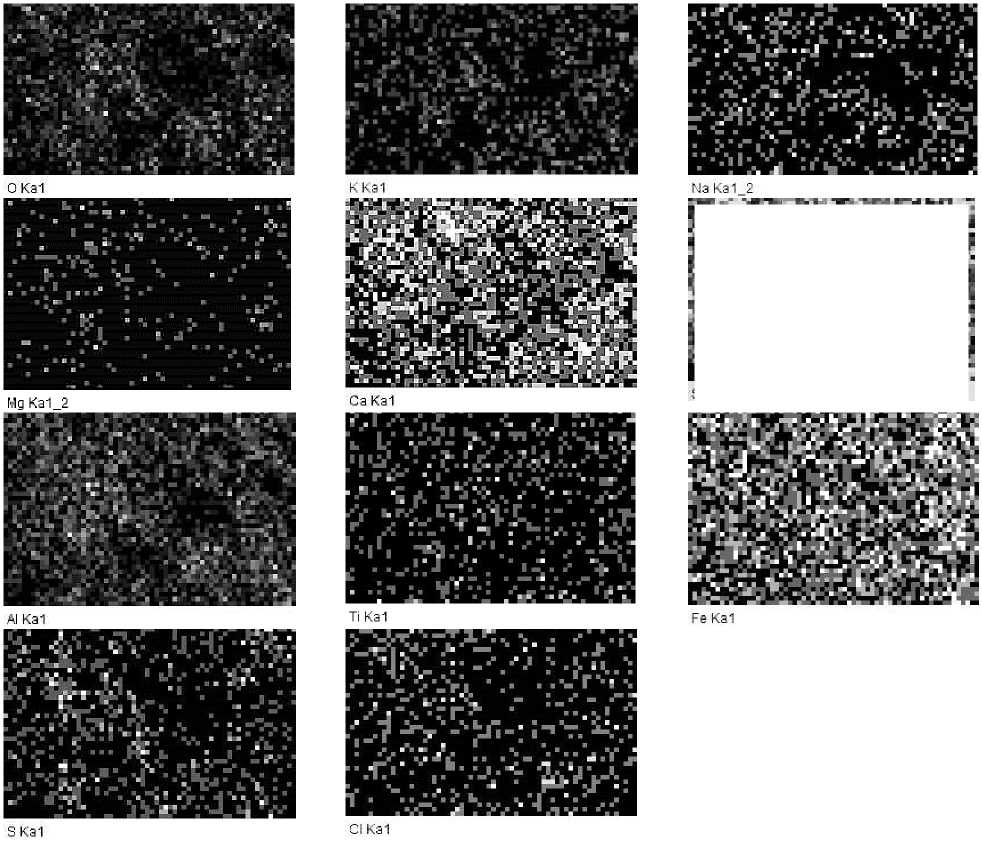
Figure 3. Elemental distribution of selected atoms in the sample taken from solidified mud volcano material
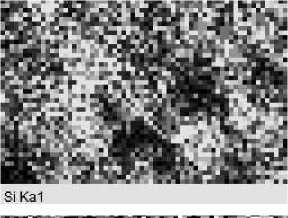
A similar elemental distribution was observed in the sample obtained from the dried clay-rich mud volcano material. The percentage content of the identified elements in the analyzed samples is presented in Table.
Table
QUANTITATIVE COMPOSITION OF THE IDENTIFIED ELEMENTS
IN CLAY-RICH AND SOLIDIFIED MUD VOLCANO SAMPLES.
|
Element |
Content, % |
|
|
Solidified Mud Volcano Sample |
Clay-Rich Mud Volcano Sample |
|
|
O |
59.5 |
61.5 |
|
Na |
1.73 |
1.87 |
|
Mg |
2.06 |
2.22 |
|
Al |
8.31 |
8.24 |
|
Si |
20.86 |
19.77 |
|
S |
0.13 |
0.36 |
|
Cl |
0.19 |
0.27 |
|
K |
1.90 |
1.73 |
|
Ca |
1.12 |
1.37 |
|
Ti |
0.31 |
0.29 |
|
Fe |
2.61 |
2.37 |
|
Mo |
0.02 |
- |
According to Table, the solidified mud volcano sample collected from various locations contains the following elemental composition: oxygen - 59.5%, sodium - 1.73%, aluminum -8.31%, silicon - 20.86%, potassium - 1.90%, and iron - 2.61%. In contrast, the sample obtained by drying the freshly ejected clay-rich mud volcano material showed the following values: oxygen -61.5%, sodium - 1.87%, aluminum - 8.24%, silicon - 19.77%, potassium - 1.73%, and iron -2.37%. The analysis also revealed the presence of therapeutically relevant ingredients in the mud volcano material, including iodine, calcium, magnesium, sodium, chlorine, iron, and others. Spectral analysis confirmed the presence of approximately 19 chemical elements in total (some in trace amounts). In addition to elemental composition, the phase composition of the samples was also examined using a PANalytical EMPYREAN X-ray diffractometer.
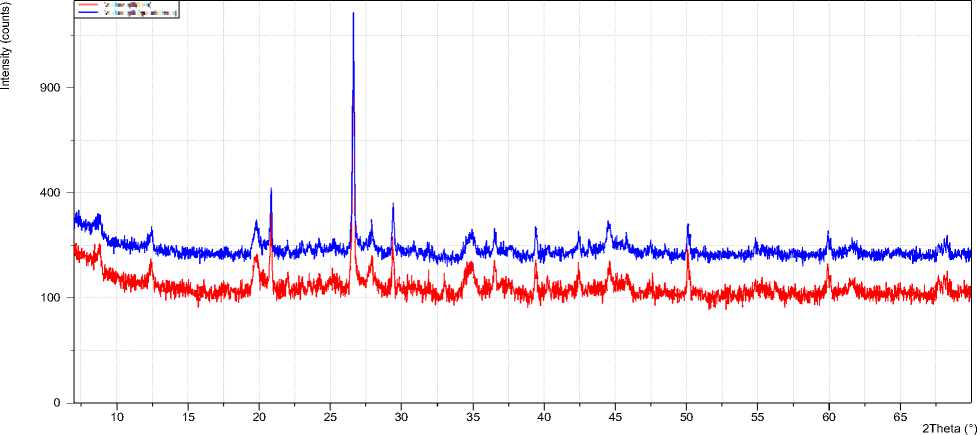
Figure 4. X-ray diffractograms of solidified and clay-rich mud volcano samples
Figure 4 presents the X-ray diffractograms of both samples. Based on the analysis of the diffraction patterns, it was determined that the samples contain practically identical amounts of the following crystalline phases.
|
Ref. Code |
Chem. Formula |
Cryst. Syst. |
Compound Name |
|
96-900-9667* |
Si3.00 O6.00 |
Hexagonal |
Quartz |
|
96-900-7690* |
Ca6.00 C6.00 O18.00 |
Hexagonal |
Calcite |
|
96-901-1423* |
Na1.64Ca0.36Al2.36Si5.64O16.00 |
Anorthic |
Oligoclase |
*The identified crystalline phases and their corresponding ASTM reference codes (numbers).
As seen in Figure 4, the primary components of the samples are minerals that are widely distributed in the Earth's crust — Quartz (Si3.00O6.00), Calcite (Ca6.00C6.00Oi8.00), and Oligoclase (Nai.64Cao.36Al2.36Si5.64Oi6.0Q). The distribution of these compounds within the mud volcano sample is clearly illustrated in the diagram below (Figure 5).
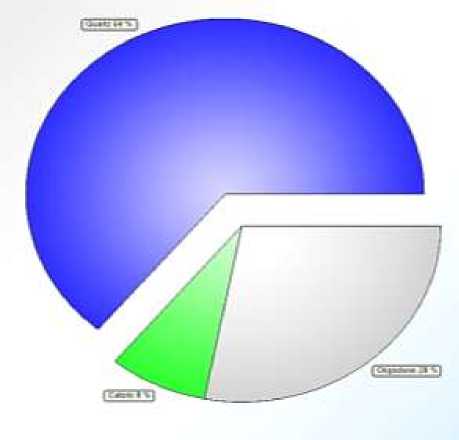
Figure 5. Quantitative distribution of Quartz (blue), Oligoclase (gray), and Calcite (green) phases in the mud volcano sample
As shown in the diagram, the mud volcano sample is predominantly composed of quartz and oligoclase, while calcite is present in smaller amounts.
In conclusion, the results of both elemental and phase composition analyses of the mud volcano samples indicate that the Sopka breccia mud does not contain harmful elements in quantities that could pose a risk to human health. Therefore, it may be safely and effectively used in the formulation of cosmetic ointments.
Conclusions
The elemental and phase composition of the Sopka breccia mud obtained from the Piroka^kul mud volcano was investigated. The analyses revealed that the mud volcano material does not contain elements in concentrations that could have harmful effects on the human body.
Using the mud volcano material, cosmetic formulations were developed based on Sopka breccia mud, T-46 oil, white Naftalan oil, and essential oils derived from plants, intended for use as topical cosmetic applications.

